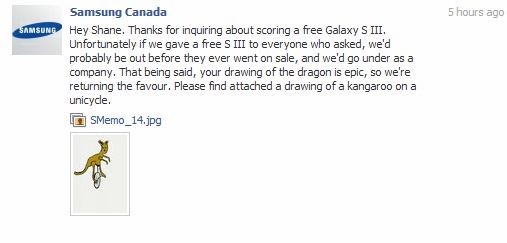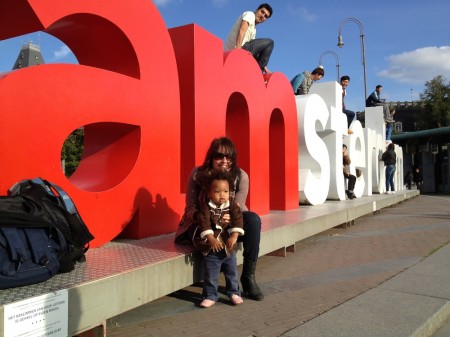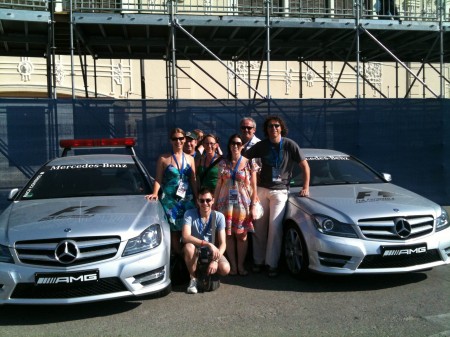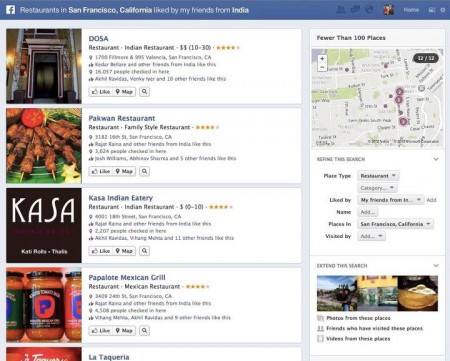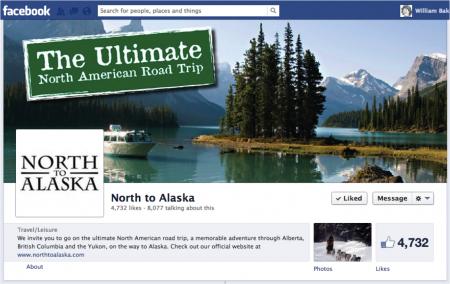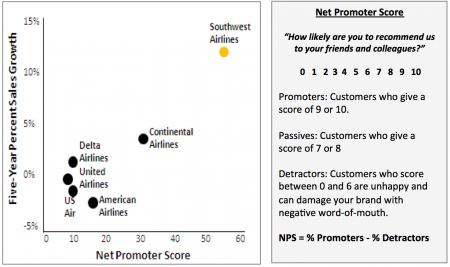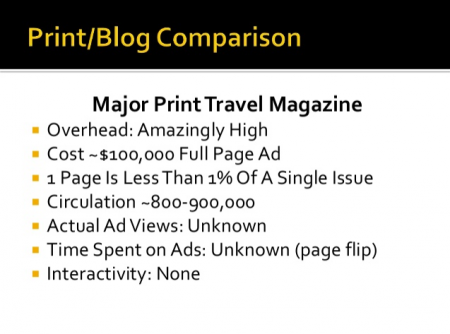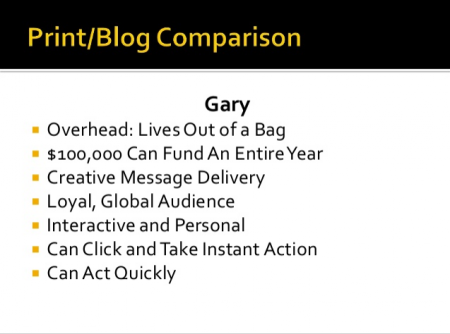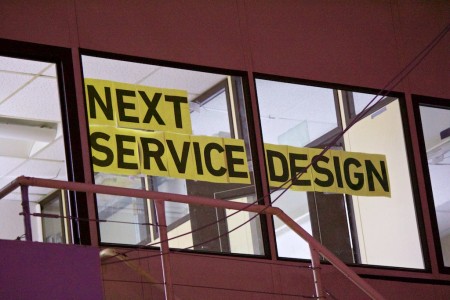The Archives
-
Internet, Marketing, social media
Don’t be so serious all the time
Going on a trip means seeing new things, meeting new people, tasting different food, making memories. It’s supposed to be fun! And as tourism marketers, it’s ok to have fun in public as well. And on the internet, you really have no choice. Here are a few examples.
White House
Somebody started a petition on whitehouse.gov suggesting the government to build a death star. The whitehouse response is hilarious! Including the title “This Isn’t the Petition Response You’re Looking For”
The Administration shares your desire for job creation and a strong national defense, but a Death Star isn’t on the horizon. Here are a few reasons:- The construction of the Death Star has been estimated to cost more than $850,000,000,000,000,000. We’re working hard to reduce the deficit, not expand it.
- The Administration does not support blowing up planets.
- Why would we spend countless taxpayer dollars on a Death Star with a fundamental flaw that can be exploited by a one-man starship?
Samsung
Someone ‘asked Samsung for a free phone. He posted on Samsung’s Facebook page and included a home drawn picture of dragon in return.
Samsung responded in style, with a picture of a kangaroo on a unicycle. Funny!
This caused a lot of PR for Samsung and they ended up sending a free phone anyways. With the dragon on it. Smart!
Thomas Cook
And then there’s Thomas Cook. A UK resident with the same name asked for a trip to Paris for all the grief he’s had over the years with a name like that.
Great to hear from you! Unfortunately we are unable to give away free holidays. Please see Thomascook.com for the best available price.
Stupid! Of course you can’t give everybody a free vacation but at least use some humour like Samsung did. Although in this case they should have jumped on it. What an opportunity wasted.
Lowcostholidays swooped in and gave Mr. Cook his trip to Paris, scoring a big PR win.
Moral of the story? Don’t be afraid to have some fun. And be quick when an opportunity arises. Marketing in 2013 demands it.
-
Internet, leadership, Management, Marketing, Travel & Tourism
Building the social destination brand
09.16.13 | Permalink | 3 CommentsThe Iamsterdam sign is an invitation to take a picture and share it
Building a destination brand is done primarily through the stories people tell each other. And social media has only accelerated that process. Getting more of the right stories told is a massive opportunity but how do you go about it?
Here’s a 5 step strategy for this.
1) MOTIVATE
A destination is the stage where memories are made and stories are created. People ignore or forget the ordinary and remember and share what’s remarkable. These remarkable experiences often turn into the primary motivators for others to visit a place. In order to get more stories told in social media, you need to make sure things are worth talking about. The IAmsterdam sign in Amsterdam (above) is always surrounded by tourists taking photos. Not only is it a cool piece of art, it’s also the perfect way to tell your (Facebook/Instagram/etc) friends where you are.
For a tourism business it’s important to build in moments that motivate people to share in the overall experience. For a DMO it’s important to increase the number of things worth talking about overall. Educating your operators about this principle is the low hanging fruit. Every tourism business should have at least one reason for people to talk about them. Often it’s just a matter of making a few tweaks to get people talking. Getting involved in city planning might be more difficult but can pay-off with massive dividend.
2) ENABLE
When there’s something worth sharing, people need to be able to share it right away. For international visitors, data roaming is often an obstacle and the availability of free Wifi will increase social sharing. It’s not just the responsibility of operators. Viewpoints, beaches, mountaintops, buildings of great architecture typically don’t have a tourism operator associated and Wifi is nowhere to be found. This is where the DMO can step in. Taiwan gets it, they offer free nationwide Wifi to tourists.
But there are other obstacles. Some businesses don’t allow pictures to be taken while others don’t have the proper lighting to make photos or to make them look good. It’s a missed opportunity, you have to give people the opportunity to share, even if it’s in a limited capacity.
3) ENCOURAGE
People will share an experience when they find it remarkable. For people on the fence it’s easy to pull them over the line by encouraging them. This can be achieved by things from signage to incentives. Disney identifies places in their theme parks with photo opp signs. Some DMO’s are starting to do the same. We worked with a ski resort last year to do put signage up to encourage sharing combined with and a contest for the best photos shared.
At an operator level it’s often a matter of reminding and asking people. Remind people on checkout to give a review on Tripadvisor for example, or follow up with an email. Others take it a step further. When I was in Wollongong, Australia, the Skydiving operator filmed and photographed the experience and gave me a link where I could download the images with an easy way to share them through my social channels.
4) CURATE
When people share stories, it’s important to find them. Social Media is like a world-wide, real-time, always-on focus group. You’re crazy if you don’t take advantage of it. You need to find them the relevant stories about your destination, good or bad.
A lot of other opportunities and insights can be gained from the massive amount of stories out there. Brands like KLM, Gatorade, Nascar and many others have dedicated social media team that monitor social media for a variety of purposes. These programs separates signal from noise by curating the content and processing it for specific purposes. Some data might need to actioned on while other data serves specific research purposes.
5a) ACTION – AMPLIFY
Some of the best stories told in social media are worth incorporating in your own marketing. People share stories with great emotional appeal and the quality, creativity and authenticity often rivals what a DMO and their agencies produce. Use the best content you find to enhance your own activities of amplify them through your own channels.
Visit Britain started sourcing the majority of the photos on its website from Flickr back in 2009. Tourism Australia only posts photos on Facebook submitted to them by their community. Many DMOs find the best photos on Instagram and reshare them while Pinterest is probably the best example of content curation with the best photos people find online.
But why stop there? You might want to give some quality content even more exposure. You can use some SEM budget to amplify a great blog post from an influencer for example. Some amplification can go even further. The Canadian Tourism Commission turned some of the best YouTube videos they found about Canada into TV commercials and recently crowd-sourced another. It doesn’t matter who created the story or where it’s located. What matters is that it moves a person down the funnel.
5b) ACTION – CUSTOMER SERVICE
Social Media will identify customer service challenges and opportunities. DMOs are already in the customer service business but have often limited themselves to a box called a visitor centre. Step outside the box and start assisting visitors in real time by responding to people in social media. Customer service challenges can be resolved quickly before they turn into negative stories.
In the meantime, the overall visitor experience will benefit from assisting travellers through social media. KLM will respond to any social media question within an hour. Most tourism operators don’t have the luxury to set-up these kind of services but the DMO can fulfill that role on behalf of their industry.
5c) ACTION – MITIGATE
Listening can also help to find information about a destination on the internet that’s incorrect (yes, there is incorrect information on the interwebs). This information could be viewed by many potential visitors who could make the wrong decision as a result. Often it’s just a matter of contacting the owner of the source to correct the error. Start by asking nicely!
If something slips through the cracks and negative stories start to emerge it’s important to mitigate these as soon as possible. There are also specific events that could cause a social media crisis. Think about a natural disaster, a call for a boycott or an influencer will a horrible experience. Being prepared and having a social media response plan in place will streamline communication before things escalate far and wide and cause considerable damage. Don’t rely on old corporate communication strategies, they don’t apply to social media. Just ask United.
5d) ACTION – LEARN
People will take pictures of things they find remarkable. And when they put themselves in the photo it’s even more remarkable. The things people find remarkable might surprise you. Insights gained from a curation program can provide you with all kinds of new marketing ideas or even identify potential target audiences. You will also identify the challenges visitors might have with the destination experience overall, sometimes in places you might not expect. Addressing these challenges in a fundamental way through service design will allow you to create a more favourable perception of the destination overall. You can measure these things over time, segment them by audience, experience and other parameters. It’s a massive opportunity and part of the future of destination marketing.
-
Marketing, social media, Travel & Tourism
Why Social Media outside your own channels is more important
Storytelling
Destination Marketing is storytelling. And by now every DMO is generating content and distributing it through their own channels. Content is shared, people engaged, fans, followers and engagement is measured and reported. Social Media is firmly established as an important channel.
But if you want to start thinking like a level 4 DMO, one of the first things to do is look beyond storytelling through your own channels. The stories people share with each other in their own networks (often private and invisible to marketers) is more credible and trusted than any story a DMO creates.
Evidence
At #SoMeT13AU, Carl McCarthy from Facebook shared that over 70% of travellers update their status and/or share photos while on holiday. Let’s look at the Capilano Suspension Bridge, a populair tourism attraction in Vancouver. The public stats for their Facebook page show a respectable 12,401 fans with 1,275 people talking. But look at an often overlooked little statistic; 449,930 photos have been tagged with this tourism experience.
Let’s look at ten of the more populair attractions in Vancouver (selected by myself from memory).
attraction likes photos tagged Capilano Suspension Bridge Park 12,404 449,930 Vancouver Aquarium 30,777 694,427 Grouse Mountain Resort 22,597 148,824 Vancouver Art Gallery 20,631 64,857 Cypress Mountain 18,270 161,182 Granville Island 15,445 265,967 Science World 14,480 87,268 Museum of Anthropology 6,766 26,146 The Vancouver Lookout 3,003 17,747 Dr. Sun Yat-Sen Chinese Garden 2,446 29,980 Total 146,819 1,946,328 Collectively, these pages have 146,819 fans. More than 3x the fans of Tourism Vancouver’s page. The total number of photos shared is almost 2 Million! If we consider that the average Facebook user has 150+ friends it means that those 2 million photos probably reached tens of millions of people. And those are just photos of attractions where people geotagged the photo. The true number of tourism related photos shared online for Vancouver is exponentially larger. That’s the real Facebook marketing.
There’s also plenty of research that demonstrates the effect of somebody posting a Facebook picture has on their network for example. Anywhere from 20% to 52% of consumers have taken a trip to a destination as a direct result of seeing a photo posted by a friend.
And that’s just Facebook.
Implications for DMOs
The implication is that a DMO marketer needs to look beyond their own channels. Most of the conversation is happening elsewhere and often invisible. But as you can see in my examples above, that doesn’t mean you can’t measure it. The success of growing tourism in your destination goes beyond the activity the DMO manages. It’s a collective effort.
- First thing to do is collaborate with your operators to make sure they make the most out of their own social channels.
- Second is to actively grow the number of visitors sharing their experiences through their social channels. Through encouragement but also by enabling sharing.
- Third, and this is where we get into the future of destination marketing, by actively managing your destination to give visitors more reasons to share their experiences and mitigate any negative stories.
[By the way, I only used Vancouver as an example because I live there, no other reason]
-
Management, Marketing, social media
9 criteria for selecting travel bloggers
01.29.13 | Permalink | 11 CommentsThis post was first published as a guest post on the TBEX blog.
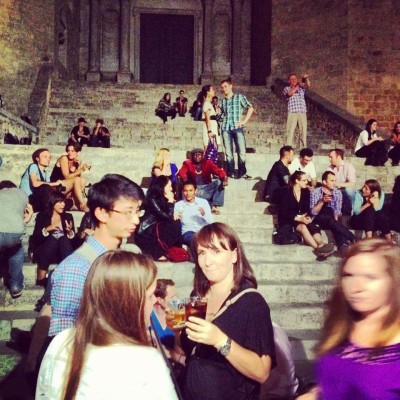
Blogger gathering at TBEX in Girona, SpainAt the moment, blog trips and bloggers hosted by a Destination Marketing Organisation (DMO) are still a bit of a novelty. DMOs don’t yet completely realize the value bloggers and bring but I expect an explosion in the near future when DMOs understand the value while travel bloggers realise the benefits a blog trip can offer and new travel bloggers want to join the club.
DMOs need a way to sort through all these requests. We’re not big fans of a one-size-fits-all approach to measure the value of bloggers but instead we like to match bloggers based on a DMO’s specific marketing goals. We also recommend that our clients take a pro-active approach to bloggers by inviting the ones with the best fit instead of a reactive one by waiting for requests to come in.
We have a good relationship with dozens of bloggers and a database with hundreds more. We have 9 criteria to select bloggers for blog trips and other campaigns, which are outlined in detail below. When developing social media strategies we recommend that our DMO clients also use these criteria to manage individual blogger requests.
1) Value to the blogger
I mention this one first, because if there’s no value for the blogger then there’s no use in working together. A blog trip or campaign needs to be a win/win situation. We’ve learned that it’s important that the DMO and blogger know each other’s expectations. Sometimes a blog trip might not work out for a variety of reasons. And that’s okay. But it’s better to set out the realities and expectations on both sides ahead of time.
2) Reach; the size of the audience
This is an important metric, but not as important as you might think – at least, not to us. We would rather work with a blogger who has a smaller audience and a higher influence. A blogger with 2,000 Twitter followers may be of more value than one with 50,000 if those 2,000 people are passionate, engaged and are likely to be influenced by the person they follow.
We use tools like Compete.com, Quantcast and Alexa to get an indication, or ask the blogger for data. We will also look at Twitter followers, Facebook likes, and other statistics. For bloggers, it’s a good idea to have this info handy as DMOs will ask for this.
3) Audience demographics
This criteria includes things like what language you blog in and what countries your readers are from, their age, education, income, etc. We’re not that interested in where the blogger comes from because their audience might come from a completely different place.
We will use Quantcast and sometimes other tools for this, although a lot of blogs don’t have enough traffic for these tools to provide valuable metrics. We sometimes ask bloggers, but we have had to make assumptions at times.
4) Influence in a niche
This one is more important to us than reach. We’re looking for people who are an authority in a subject matter. That’s the power of the Internet – there’s a community for every passion. It’s safe to assume that a wine blogger has an audience interested in wine. If we’re working with a destination that is seeking to leverage its wine products or experiences, we will pick a wine blogger with a small audience over a general travel blogger with a larger audience in most cases.
In order to determine influence, we look at things including comments on a blog (volume and types of comments) and how the blogger interacts with her/his audience. Why? It’s that personal connection that makes a blogger unique and influential. And we will also look at repeat visitation to the blog. This is an indicator of how loyal an audience is and therefore the influence the blogger has.
What we sometimes observe is that bloggers with a large audience lose the personal connection with their readers. Their blog becomes more like a traditional publication online. That’s to be expected and not necessarily a bad thing, it just changes the types of initiatives we will invite them for, and the approach we take. They may be better suited for a traditional press trip.
5) Connection to other influencers
This one is closely related to #4. Blogging is social. We believe that a blog trip or a blog campaign’s value doesn’t just come from the value as a result of the produced content, but also from the personal connections created. A blogger with a lot of connections to other influencers is more desirable as that means there’s a better chance that their messages are then amplified or retweeted by other influences. A good relationship with one blogger can also lead to a referral to another. We often ask other bloggers for suggestions about other writers.
6) Quality and style of writing, photography and/or video
This one speaks for itself. We prefer blogs with quality content. And sometimes one blogger’s style fits better with a particular destination brand than another. And it doesn’t mean that we look for moderate bloggers only, by the way. We seek honesty and transparency, otherwise a message won’t be credible. The blogger at TBEX who writes critical posts just to make PR people uncomfortable would probably not be invited, though (see #9). Often, quality trumps reach and influence.
7) Speed of communication
We don’t have a specific preference. It varies from initiative to initiative. Most of the time, a blog trip is designed to create a lot of social content right away, and speed is important. Other times, it won’t matter too much if it takes a few weeks for us to see a post (months is pushing it). The longer it takes, the more the details and energy are lost. Plus, the copy ends up looking more like it belongs in a traditional publication.
8) Use of technology and tools
Does the blogger tweet, Instagram, or post to fan pages during the trip? This is obviously helpful.
And it also varies. If we’re working on a campaign where we want a lot of content in the moment, Twitter, Facebook, and Instagram are important. In some cases, they’re not.
Sometimes we look for quality, influence, and reach for a specific tool or network. We invited a big Instagrammer to Flanders, for example. The Costa Brava even hosted an Instagram trip.
9) Personality
Is this blogger easy to work with?
We will happily sacrifice reach or influence for a nice person when we’re hosting a group of bloggers. Personality type tells us something about the bloggers’ relationship with their readers, and that’s important in social media. Other factors including professionalism and attentiveness are equally important. If it takes weeks for somebody to reply to an email, or if they don’t follow practical instructions we get worried. We often check references as well by calling another DMO the blogger has worked with.
We have good results using our criteria above. In the future we hope to build out our database so we can be a good matchmaker between bloggers and the tourism industry that delivers benefits for both.
-
Marketing, social media, Travel & Tourism
How can destinations measure the value of travel bloggers?
01.23.13 | Permalink | 4 CommentsI wrote this post as a guest post on the TBEX blog.
#blogtripF1
Destination Marketing Organisations (DMOs) have hosted influencers for a long time. It used to be the exclusive territory of travel journalists. They were courted, invited and hosted in order to generate awareness and consideration for a destination.
In order to measure this PR most DMOs used the “Advertising Value Equivalency” (AVE). You take the size of the produced piece, use the equivalent cost of running an ad of the same size in the publication, apply a multiplying factor because editorial is more credible and there’s your equivalent value of “free” advertising.
Most people in the PR industry agree that AVE is significantly flawed. But for years, it’s all we had. It was simple and easy to calculate – and at least it was consistent, something we could monitor over time, and benchmark against the competition. At least that was something.
There’s no such direct measure for blogger-based campaigns at the moment. Keith (Velvet Escape) and Melvin (Traveldudes) presented a first draft of a method calculating the value of a blog at a TBEX session in Girona. It was loosely based on AVE and an attempt to quantify the value of a post in dollars.
I applaud the attempt because at least it will provide DMOs with some guidance and offer benchmarking possibilities. But I’m not a fan of trying to use an old-media method that’s already shaky at best and applying it to a new world model in order find a social media equivalent for it. It assumes a specific blogger will provide equal value to all destinations and that’s simply not true.
There are a multitude of travel blogs out there, and with careful research, we can unearth a blog and a writer who has the best fit with a specific destination and its objectives. Often we end up bringing bloggers who have a specific skill or niche. And when we bring a group of bloggers together, the composition of that group, the mesh of personalities, matters.
It’s not just the size of a blogger’s audience that’s important, but the likelihood of delivering a relevant, credible, and authentic message to their network. Passion speaks volumes. We need to believe that their message will influence a reader’s travel decisions.
At Think! we love working with bloggers because they are, generally speaking, very passionate and excellent creators of content. We work with dozens of DMOs around the world, helping them arrange blog trips, and we involve bloggers in many of our campaigns. We tie the way we measure a campaign involving bloggers to the specific marketing objectives.
We research, identify, and approach the right bloggers for the campaign, assist with the trip planning, and provide consultancy to clients on how to make these travel (or cultural) writers feel most engaged or valued.
For example:
- In Belgium we worked with Tourism Flanders to identify, contact, and send 100 travel and music bloggers to festivals all summer long, with the objective of generating awareness for Flanders as a prominent festival destination in Europe.
- In Richmond, British Columbia, we helped find a food blogger who would eat and blog about a different Richmond restaurant every day for a year with the objective to position Richmond in the centre of the foodie community.
- In New South Wales, Australia, we organised a month-long bus trip of bloggers including a photographer and videographer with the objective of showcasing the destination and creating content in a more social way.
Through our work we know many bloggers and we hope we have developed a good reputation amongst them. Because we have these relationship it makes it easier and easier to find the right bloggers for our projects.
-
Internet, Marketing, social media, Travel & Tourism
Graph Search is something people might just love
In 2010 I wrote that Tripadvisor’s integration of Facebook connect offered a glimpse into the future. Well the future is here.
Graph Search, announced yesterday by Facebook, is a new way of searching. It’s using taking your social graph and the content shared on Facebook as the basis of relevancy. Graph Search will allow you to search for things based on your personal network of friends, your ‘friends-of-friends’ or Facebook users in general.
You can soon search on Facebook for “restaurants in San Francisco liked by people who live in San Francisco”.
Or “restaurants in San Francisco my friends like”.
Or “restaurants in San Francisco liked by my friends who live in San Francisco.”
Or “Restaurants in San Francisco liked by my friends from India”
The possibilities are endless.
The travel decision process is going to be massively influenced when Facebook users adopt this kind of functionality. Because travel product is a heavy used item on Facebook. People check in, share photos and like places they’ve been all the time.
A whole new world of discovery and travel inspiration might open up. Imagine searching for “Places people check-in who like scuba diving”
Or “Cities people check-in who like art”
Or “festivals people like who like Greenday”
Or “pictures from my friends in Berlin”
Yesterday I also read a nice post by a Techcrunch writer about a recent frustrating trip to the new MySpace. This part caught my attention and made me think.
Wait, how does Myspace know I would like these?Is everyone seeing the same ones? Did Justin pick them out for me? Are my friends listening to these guys? I have no context here. I don’t understand why they’re recommended. I decide to move on.and
I mean really, I logged in with Facebook – would it have killed you to look through my “likes” for a bit of personalization here?A Techcrunch writer is obviously ahead of the curve. But what’s happening here is that people are starting to expect websites to personalize based on their previous behaviour and what they or their friends like on Facebook.
I remember being freaked out when Amazon recommended me books based on my previous purchases. Or when a laptop bag followed me around the internet thanks to remarketing. But that’s a long time ago. I don’t get freaked out anymore. We’ve gotten used to it. We even like it. We get mad when we see ads that aren’t relevant. And Facebook’s Graph Search might just deliver exactly the functionality at the right time. And travel and tourism marketing will never be the same. You better get ready.
-
Marketing, social media
Two Facebook pages best practices
North To Alaska
First there’s the ‘North to Alaska’ page. I know this page well because it’s managed by Think!’s Dustin. And he’s killing it!
It’s the only page I know on Facebook where the ‘people talking’ almost always outnumbers the number of ‘likes’ with hardly running any ads. Besides sharing mind blowing photos, Dusty is also doing everything right to engage the community. Drawing engagement from fans, involving them in answering questions and recognizing fans for great contributions. The page has build a community of very passionate people who love the Alaska highway. The almost 5,000 fans reach tens-of-thousands because of the great community management.
<sales>
Dusty also conducts our populair social media audits. He will review your page, tell you what you do well, where you can improve and how. Just drop us a note for info.
</sales>
Applebee’s
Applebee’s? The restaurant chain? Yes, that Applebee’s.
Now the postings on the page itself is not bad, but it’s not great either.
It’s the way they handle what people post on their page. A few months ago some teenagers started ‘trolling’ the page. An ‘Applebee’s Reply Guy’ was created and has turned trolls into fans. Click on ‘See All’ where it says ‘Recent Posts by Others on Applebee’s’ and learn from how they respond to good comments, bad comments and how they use wit and humour when appropriate.
I was made aware of this page at #Somet12. Think!’s Mikala wrote a great post about it.
Update Feb 4, 2013. Apparently the Applebee’s Reply Guy lost his way (or did they change agency).
-
Management, Travel & Tourism
NPS is the perfect destination KPI
01.08.13 | Permalink | 12 CommentsA destination brand is shaped by the stories people tell each other. Consumers will share stories about their experiences. Do it right and they’ll do the marketing for you. Under deliver and they will become detractors. It’s the role of the DMO to lead the collection of stakeholders to market to the right people and deliver remarkable experiences.
Fortunately a visitor’s experience is one of the few things a DMO and it’s stakeholders have control over. And NPS, or Nett Promoter Score is the perfect way to measure and benchmark this. NPS measures customer satisfaction by answering one question – How likely is it that you would recommend [brand xyz] to a friend or colleague? On a zero to ten scale, people who score a 9 or 10 are promoters, they will recommend your destination. People who score a 7 or 8 are passive while people who score between 0 and 6 are detractors. They will tell others not to go. When you subtract the number of detractors from your promoters you end up with your Nett Promoter score.
There’s a lot of evidence that a high NPS is a strong indicator for corporate growth. Southwest is known for it’s friendly staff and business practices. It stands out from most other airlines in the US. Southwest built a customer centered culture and considers “a high NPS indicates a strong competitive advantage“. They have posted 39 years of consecutive profits and this blog posts quantifies the results of their customer service efforts.
I’ve been thinking about this for a while and have concluded that every DMO should measure NPS. Because not only is NPS a good indicator of future growth, it will also get staff and stakeholders to focus on the consumer and the customer experience.
Managing your destinations reputation is more important than ever. And it’s a collective responsibility. Use NPS to measure and benchmark it. Read The Ultimate Question to learn more about NPS.
-
social media, Travel & Tourism
The business case for blogtrips in two simple slides
At Think! we love working with bloggers because they are, generally speaking, very passionate and excellent creators of content. We work with dozens of DMOs around the world, helping them arrange blog trips and we involve bloggers in many of our campaigns.
About a month ago I attended the 2012 Digital Tourism Innovation Campus in Barcelona. Gary Arndt from Everything-Everywhere presented. Gary is one of the biggest travel bloggers out there and he’s permanently on the road. Gary laid out the business case for working with bloggers in these two simple slides.
Pretty straight forward isn’t it?
There’s more good info in his full presentation below.
-
Experience Design, Internet, Management, Marketing, social media, Travel & Tourism
3 things to think about in 2013
Happy New Year everybody! Here are three things off the top of my head that are important things to consider for 2013. Do you have any more?
1) PUT SOCIAL AT THE CORE
I think it’s pretty clear by now that social media has a major impact on the travel decision making process. If your tourism business or DMO hasn’t realized this yet you better catch up. You should be at level 3 or higher by now.
Most marketers think of social media as an add-on to a traditional campaign, or at least start with traditional thinking. It’s time to flip it around. Start with a social idea and support it with traditional methods. Or do traditional things in a social way. For example, we recently worked with a DMO who let it’s Facebook community vote on what photos would be published in it’s visitor guide.
2) START USING SERVICE DESIGN
Mitigating a mediocre experience with brilliant marketing doesn’t cut it anymore. The experience IS your marketing and the stories your visitors tell each other is what it’s all about. You have two choices. First choice is to join the race to the bottom and keep offering specials, discounts and special offers. The second one is to create remarkable experiences people love and want to be part of, regardless of what it costs.
If your choice is the latter, you need to start thinking about service design. When you’re an operator you need to start thinking about the end-to-end experience you offer your guest. When you are a DMO you need to think about the end-to-end destination experience. Service design is gaining a lot of momentum in Europe, especially in Austria where destinations are starting to take an active role in the design of the destination experience.
3) MOBILE: THINK DEVICE PLUS CONTEXT
I was on a panel at a conference in Barcelona recently and somebody asked about mobile. Before I could even think about it I said “it’s not about mobile, it’s about device + context”. I probably heard it somewhere before but I have never really thought about it like that. But it’s true. Whether you build a desktop site, a mobile site, an adaptive site or an app, it’s not the device that’s important. It’s the context of use.
When you search google maps, it takes into account your device, where you are and what date and time it is. That’s the context of your usage and the information you get back takes that into account. You need to so the same thing. A consumer accessing your content at home is looking for very different things than a consumer walking down the street in your destination.
Now here’s the kicker. Often that means people use another website than yours. Somebody walking down the street looking for a restaurant is going to use Google Maps, Yelp or Tripadvisor, not a DMO website. Even a consumer planning as trip might never even make in onto your website (hello travel bloggers). Your content online strategy needs to include content on third party websites. From inspiration to transaction. Just like we used to do it in the 90s with travel guides and tour operator brochures.

